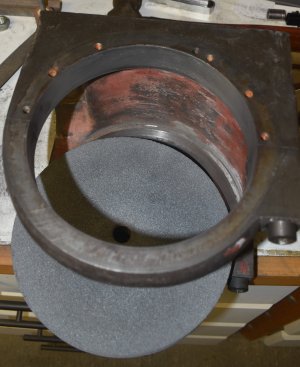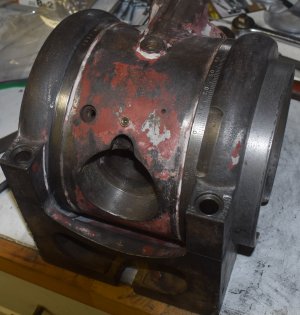Great progress! Once I pushed the pin out a few more thou it was no longer locking the brass bushing and worm gear in place. Now mostly disassembled!
Sorry I wasn't able to make this problem more clear. My old software I used for adding labels to pictures no longer works on the new windows and I haven't yet found a suitable replacement. In the pic in my previous post you can just barely see the pin sticking out a mm on the upper right hand side of the cylinder that holds the worm gear. At the top of the cylinder you can see the worm gear shaft protruding. The brass bushing is slightly recessed into the inner bore and you can see a couple of slots in the brass transecting the gear shaft. Probably clear as mud?
View attachment 24296
Actually quite clear. I seem to have difficulty understanding lots of stuff others say on here. Yours was just fine.
Glad you made more good progress.


